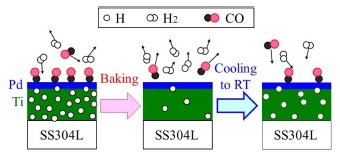Volume 62, Issue 9
Special Feature : Transactions of the Annual Meeting on the Japan Society of Vacuum and Surface Science 2018 [IV]
Displaying 1-12 of 12 articles from this issue
- |<
- <
- 1
- >
- >|
Preface
-
Article type: Preface
2019 Volume 62 Issue 9 Pages 543
Published: September 10, 2019
Released on J-STAGE: September 10, 2019
Download PDF (311K)
Celebration for Medal of Honour
-
Article type: Celebration for Medal of Honour
2019 Volume 62 Issue 9 Pages 544
Published: September 10, 2019
Released on J-STAGE: September 10, 2019
Download PDF (305K) -
Article type: Celebration for Medal of Honour
2019 Volume 62 Issue 9 Pages 545
Published: September 10, 2019
Released on J-STAGE: September 10, 2019
Download PDF (387K)
Special Feature : Transactions of the Annual Meeting on the Japan Society of Vacuum and Surface Science 2018 [IV]
-
Article type: Regular article
2019 Volume 62 Issue 9 Pages 546-550
Published: September 10, 2019
Released on J-STAGE: September 10, 2019
Download PDF (1017K) -
Article type: Regular article
2019 Volume 62 Issue 9 Pages 551-554
Published: September 10, 2019
Released on J-STAGE: September 10, 2019
Download PDF (529K) -
Article type: Regular article
2019 Volume 62 Issue 9 Pages 555-560
Published: September 10, 2019
Released on J-STAGE: September 10, 2019
Download PDF (2128K) -
Article type: Letter
2019 Volume 62 Issue 9 Pages 561-563
Published: September 10, 2019
Released on J-STAGE: September 10, 2019
Download PDF (1332K) -
 Article type: Current Topics
Article type: Current Topics
2019 Volume 62 Issue 9 Pages 564-567
Published: September 10, 2019
Released on J-STAGE: September 10, 2019
Current Topics
-
Article type: Current Topics
2019 Volume 62 Issue 9 Pages 568-573
Published: September 10, 2019
Released on J-STAGE: September 10, 2019
Download PDF (4385K)
Planning Series
Japanese Food Culture
-
Article type: Planning Series
2019 Volume 62 Issue 9 Pages 574-575
Published: September 10, 2019
Released on J-STAGE: September 10, 2019
Download PDF (696K)
Science Café
Research Abroad
-
Article type: Science Café
2019 Volume 62 Issue 9 Pages 576-577
Published: September 10, 2019
Released on J-STAGE: September 10, 2019
Download PDF (1575K)
News & Trends
-
Article type: News & Trends
2019 Volume 62 Issue 9 Pages 578
Published: September 10, 2019
Released on J-STAGE: September 10, 2019
Download PDF (347K)
- |<
- <
- 1
- >
- >|






